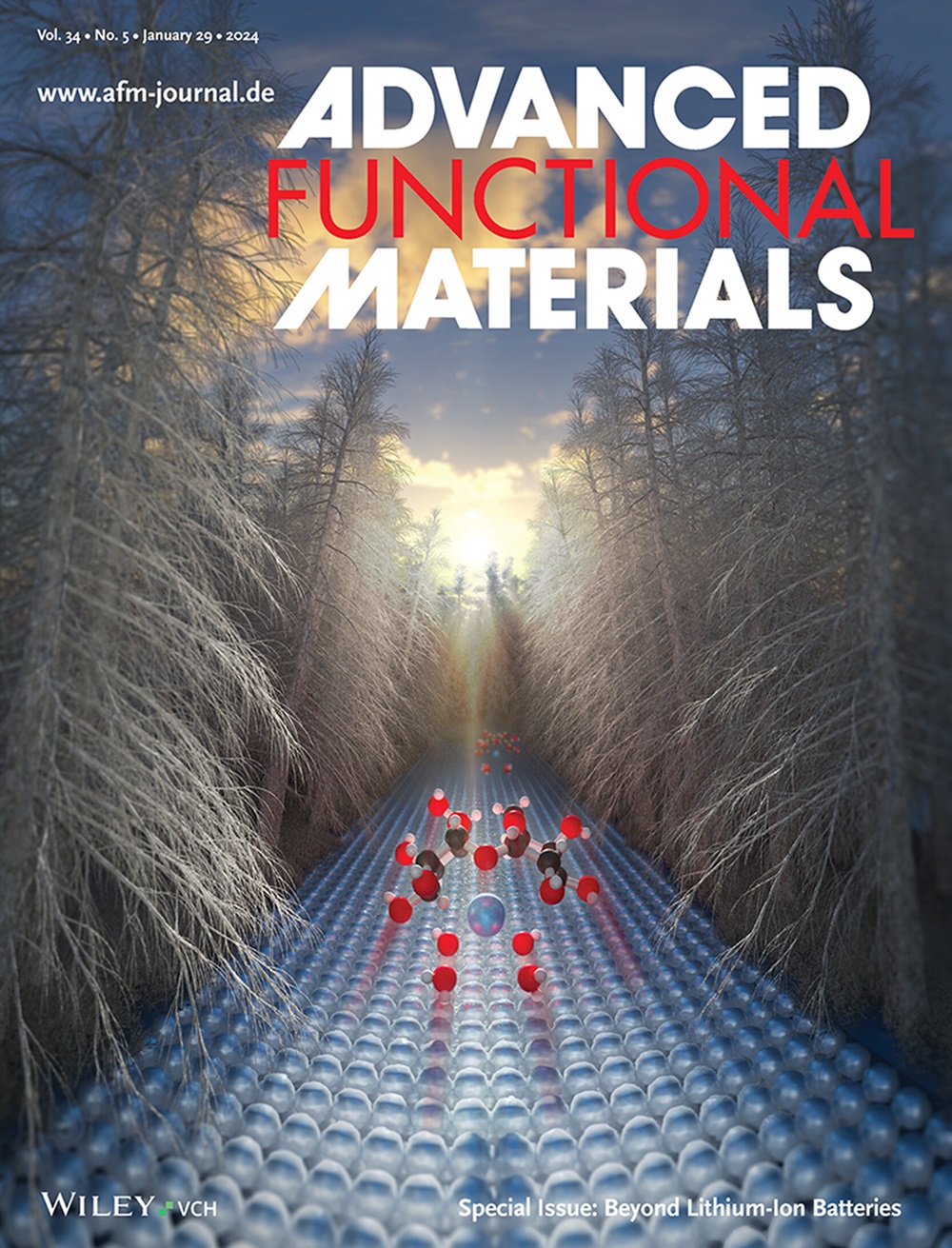电催化用无碳双原子催化剂的成就与挑战
IF 18.5
1区 材料科学
Q1 CHEMISTRY, MULTIDISCIPLINARY
引用次数: 0
摘要
无碳双原子催化剂(CFDACs)由于其不同于碳基双原子催化剂的独特性质和结构,具有不同于碳基双原子催化剂的活性、选择性和稳定性,正逐渐进入电催化领域。目前,cfdac的研究取得了一些进展,包括金属-载体相互作用的结构-性能关系、理论与实验相结合的研究、潜在催化机理的电催化应用以及实现高活性电催化性能的设计策略。本文首先从无碳衬底和双原子位的角度阐述了CFDACs的结构-性能关系,然后简要总结了CFDACs的先进表征技术、理论研究、储能和转化应用,并重点介绍了从空位锚定、应变调节和合金化等方面实现高性能CFDACs设计的策略。最后对cfdac面临的挑战和未来的发展提出了自己的看法。本文章由计算机程序翻译,如有差异,请以英文原文为准。

Achievements and Challenges in Carbon-Free Dual-Atom Catalysts for Electrocatalysis
Carbon-free dual-atom catalysts (CFDACs) are beginning to make their presence in the field of electrocatalysis due to their unique properties and structures that are different from those of carbon-based DACs, which are endowed with different activity, selectivity, and stability. Currently, some advances are made in the study of CFDACs, including structure-performance relationships of metal-support interaction, theoretical study combined with experiments, electrocatalytic applications with potential catalytic mechanisms, and design strategies to achieve highly active electrocatalytic performance. Herein, the perception of the structure-performance relationships of CFDACs is first elaborated in terms of carbon-free substrates and dual-atom sites, then briefly summarizes advanced characterization techniques, theoretical study, and energy storage and conversion applications, and highlights the strategies to realize the design of high-performance CFDACs in terms of vacancy anchoring, strain regulation, and alloying, and finally put forward the personal viewpoints on the current challenges and future development of CFDACs.
求助全文
通过发布文献求助,成功后即可免费获取论文全文。
去求助
来源期刊

Advanced Functional Materials
工程技术-材料科学:综合
CiteScore
29.50
自引率
4.20%
发文量
2086
审稿时长
2.1 months
期刊介绍:
Firmly established as a top-tier materials science journal, Advanced Functional Materials reports breakthrough research in all aspects of materials science, including nanotechnology, chemistry, physics, and biology every week.
Advanced Functional Materials is known for its rapid and fair peer review, quality content, and high impact, making it the first choice of the international materials science community.
 求助内容:
求助内容: 应助结果提醒方式:
应助结果提醒方式:


